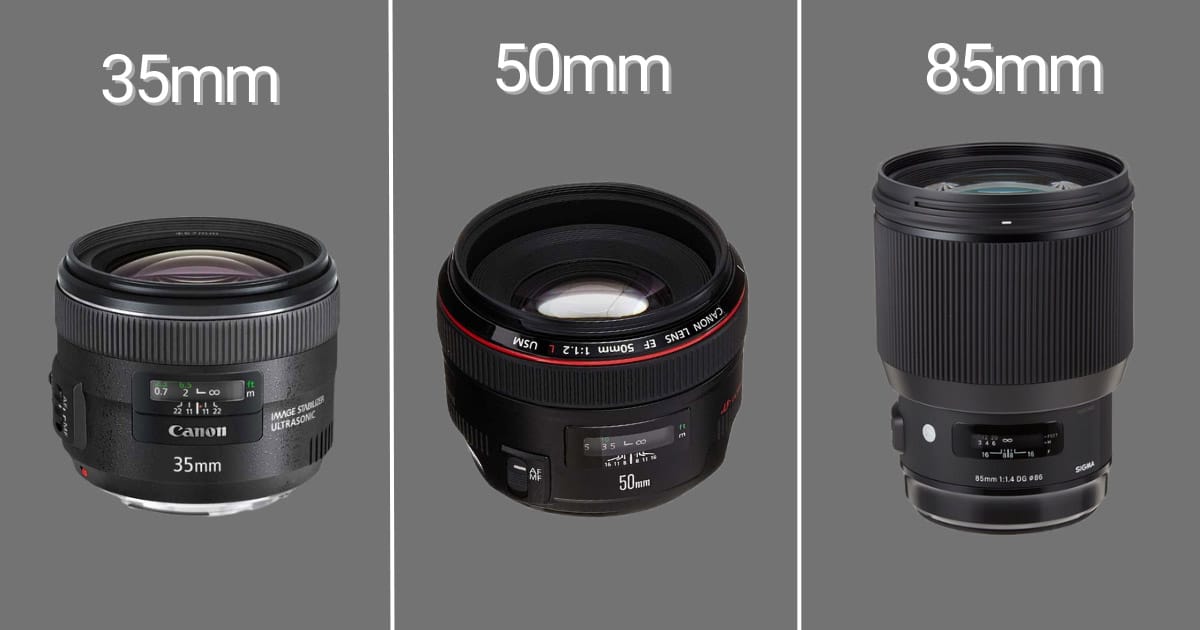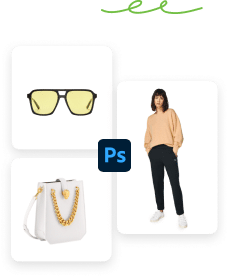The most tricky question that nearly every portrait photographer asks. However, all these three lenses are great and provide different portrait photos. Before picking one, you should decide what kind of result you want to achieve and what emotions or messages you want to highlight.
By measuring the strengths and weaknesses, you can determine which lens is best for portraits: 35mm vs 50mm vs 85mm. Sounds cool, right? We designed this article to help you decide which is ideal for your style. And at the end, you’ll know different and high-quality portrait lenses.
Keep reading to explore the beauty of these lenses.
What you’ll learn in this article
- 1 What is the Best Lens for Portrait Photography?
- 2 35mm vs 50mm vs 85mm: Which One is Right For You?
- 3 35mm Lens for Portrait Photography
- 4 50mm Lens for Portrait Photography
- 5 85mm Lens for Portrait Photography
- 6 35mm vs 50mm vs 85mm lens – Comparison Chart
- 7 35mm or 50mm or 85mm Lens – Which Lens Should You Choose?
- 8 Best 35mm, 50mm, and 85mm Lenses for Portrait Photography
- 8.1 Canon EF 85mm f/1.2L II Lens – Best for Headshots
- 8.2 Canon EF 50mm f/1.2L Lens – Best for All Types of Photography
- 8.3 Canon EF 35mm f/2 IS USM- Best Wedding & Street Photography
- 8.4 Nikon 35mm f/1.4G – Best for Street Photographers
- 8.5 Sony FE 85mm f/1.4 – Best Lens for Fashion Photography
- 8.6 Sigma 85mm f/1.4 – Best Lens for Glamor Photography
- 8.7 FAQs
- 9 Final Verdict
What is the Best Lens for Portrait Photography?
In portrait photography, the main focus point is to capture the mood and emotion of individuals. The prime lens is considered the best lens for portrait photography. But the lens perfection depends on personal preferences.
Suppose you want to shoot a portrait with a background; the 50mm or 85mm lens is the best pick for you.
However, you may get a versatile range of focal lengths using a zoom lens. On the other hand, the prime lens produces faster, lighter, and sharper images using the shallow depth of field, composition, color, and lighting.
Let’s take a look at some lens focal length options for knowing which lens is suitable and why.
35mm vs 50mm vs 85mm: Which One is Right For You?
Different focal lengths work on different scenarios. When you use the prime lens, you experience a fixed focal length. Also, to reduce blur and noise from the image, these three prime lenses offer you a wide aperture, low ISO range, and high shutter speed.
You may often choose a 50mm lens for its sharp and versatile image quality. But a 35mm lens is more suitable for landscape and indoor photos because it allows you to take different shots. On the contrary, an 85mm is best for its universal options.
However, this group of lenses covers almost all photography styles that a photographer wants most. But the question is: which one can match your photography style?
Following the next section, you will get the proper reason why you choose one for portraits and what is the best lens for portraits. Let’s start together!
35mm Lens for Portrait Photography

If you’re looking for a wider focal length, a 35mm prime lens is the best pick. You can capture your subject along with a detailed background scene around them. You don’t need to go far away from your subject to capture these photos.
It is the best lens for outdoor family portraits and lifestyle images. However, if you have space limitations for an indoor shoot, you can use this prime lens.
Check out some pros and cons of the 35mm lens.
Advantages of Using a 35mm Lens
- More versatility: Without zooming lenses, you can capture close-ups with details by cropping. And is the perfect match for any photography like landscape, product photography, model photography, etc., along with different indoors and outdoors.
- Deeper depth of field: The 35mm lens helps to take sharp subject images by focusing around 10 feet away at f/2.0.
- Composition & bokeh: The lens is perfect for creating aesthetic and nice bokeh with dynamic artistic effects (shoot-throughs, a ring of fire, etc.)
- Perfect for low light shooting: Gives the flexibility to capture in the evening or at night outdoor photos.
- Perfect angles: You can highlight your subject’s story with an artistic angle for portraits or nature photography.
- Focal length: The focal composition gives you a more realistic and creative representation.
- Light-weight: This lens is best for its portability and compact size, which gives the flexibility to carry around.
Disadvantages of Using a 35mm Lens
- Lack of Zoom feature: The lens is not suitable for portrait photos outdoors because of lacking zoom features. Also, it can distort the subject’s face if you stand too close.
- Expensive: The 35mm f/1.4 lens is more expensive.
Note: The F1.4 aperture for the 35mm lens is quite large and heavier.
Why You Should Use a 35mm Lens for Portraits
This versatile lens suits almost any situation because of its lightweight and wide-angle focal length. Want to capture landscapes, seascapes, or street photography? You can use 35mm lenses to get versatile photography options like
- Environmental portraits
- Full body portraits
- Group portraits
- People portraits with more background scenes
- Not too much distortion as in other prime lenses.
50mm Lens for Portrait Photography

The standard or 50mm lens is the best option between wide and telephoto primes. Also, it gives more shooting flexibility for small or large spaces. Do you want to capture mid-length portraits of models and other subjects?
With this lens, you can capture tack-sharp images at wide-open apertures (maximum apertures of f/2 and larger) that provide a shallow depth of field. The lens is popular for its affordability, versatility, and great shooting types.
Advantages of Using a 50mm Lens
- Depth of Field: The 50mm lens provides a shallow depth of field, which is responsible for making a subject out of focus and giving an appealing look.
- Fast: This lens offers a fast and wide aperture (f/1.8) suitable for low photography. The lower ISOs and faster shutter speeds can freeze motion and eliminate camera shake.
- More Control & Great Creativity: You can blur your backgrounds creatively and focus users’ attention on your subject.
- Picture Quality: Using this lens, you get a standard zoom lens that helps to take sharper and higher-contrast images.
- Cost-friendly: Cheaper than a 35mm lens and the best pick for beginner-level photographers.
- Small and Lightweight: The lens is ideal for travel and street photography because its small size easily fits in your backpack or small camera bag.
Disadvantages of Using a 50mm Lens
- Composition: You won’t get many details about your subjects when using this lens for portraits.
- Zoom Feature: You can’t zoom in and out when taking pictures because 50mm lenses are fixed.
- Aperture Range: The slow aperture range (f/4 – f/5.6) won’t give much flexibility to separate your subject from your background.
Why You Should Use a 50mm Lens for Portraits
The wide f/1.8 aperture makes this lens perfect for capturing your subject’s photos in a dim-lit environment or at night. Also, the bokeh effect gives a beautiful and professional look. You won’t need much space to shoot portraits.
However, a 50mm lens is perfect for taking landscapes, architecture, street photos, macro subjects, etc.
85mm Lens for Portrait Photography
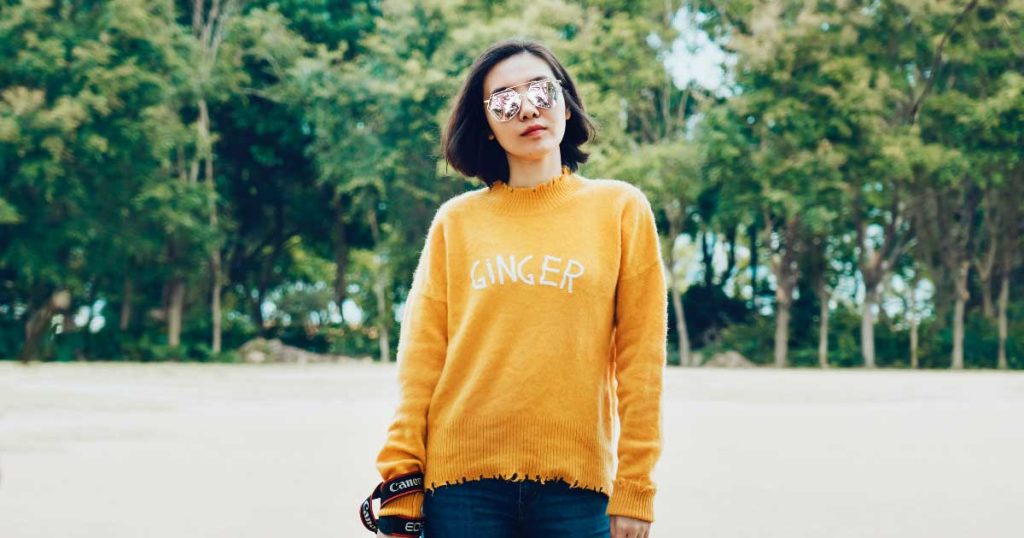
The 85mm lens is best for portrait photography that offers a perfect close-up headshot with details by minimizing distortion of your subject. This classic lens is best for outdoor and indoor portraits, giving multiple locations shooting versatilities.
Advantages of Using an 85mm Lens
- Depth of Field: Using an 85mm lens, you get deep, detailed, and beautiful DOF by blurring the background. For this reason, this lens is considered the best focal length for portraits.
- Focal Length: The minimum focal length of this lens is approximately 2.8 feet from your intended focal point.
- Less Distortion: These lenses capture accurate subjects’ portraits with very little distortion.
- Bokeh: By creating an interesting and beautiful bokeh effect, you can grab users’ attention to focus on the subject’s details.
- Versatility: The lens size is best for portraits because it highlights a person’s profile (headshots or full-body shots) very well and makes an appealing look with details.
- Low Light: Using this lens, you can have flexible options that support low-light shooting.
Disadvantages of Using an 85mm lens
- Space Limitation: The lens is not the best fit for indoors when facing space limitations.
- Slow Focus: For shooting motion objects, this lens is not a good choice.
Why You Should Use an 85mm Lens for Portraits
An excellent zoom factor, fantastic focal length, and shallow depth of field allow you to capture street photography, portraits, landscape, etc. Also, the lens is best for outdoor portraits. However, the lens serves incredible and quality images with artistic blur.
Note: Larger aperture f/1.4 can be larger, heavier, and costly.
35mm vs 50mm vs 85mm lens – Comparison Chart
| Portrait Photography Types | 35mm | 50mm | 85mm |
|---|---|---|---|
| Subject with Background Portraits | Yes | Yes | No |
| Environmental Portraits | Yes | No | No |
| Waist Up Portraits(Mid-shot) | No | Yes | Yes |
| Shooting Close-up Portraits | No | Yes | Yes |
| Shooting Full-length Portraits | Yes | Yes | No |
| Shooting Beauty Shots | No | Yes | Yes |
| Indoor Portraits (limited space) | Yes | Yes | No |
| Outdoor Portraits (unlimited space) | Yes | Yes | Yes |
| Shooting Mix Length Portraits | No | Yes | No |
| Shooting Small Space Portraits | Yes | Yes | No |
| Shooting Large Spaces Portraits | Yes | Yes | Yes |
| Lifestyle Portraits | Yes | Yes | Yes |
| Editorial Portraits | Yes | Yes | Yes |
| Studio Portraits | No | Yes | Yes |
| Group Portraits | Yes | Yes | No |
| Shooting Senior Portraits | Yes | Yes | Yes |
35mm or 50mm or 85mm Lens – Which Lens Should You Choose?
When deciding the best camera lens for capturing portraits, it’s safe to consider the standard one. However expert photographers know their lens flexibility and which one is best for them. The 50m and the 85mm are considered standard lenses for portrait photography.
Using these two prime lenses can eliminate face distortion compared to a 35mm lens. The 50mm lens is a versatile portrait photography option that helps to capture both headshots and full-body shots.
With an 85mm lens, you get a narrow angle of view that helps to separate the main subject from the background.
However, the 35mm lens is not bad because it produces more realistic photos. If you want to highlight your main subject with an interesting background, the 35mm lens can help you.
For this reason, the lens selection depends on your shooting style. You may also try other focal lengths lenses to find the most suitable one for your portrait photography.
Best 35mm, 50mm, and 85mm Lenses for Portrait Photography
Picking a perfect one may be a challenging task as a newbie. But always choose a portrait lens to consider your camera’s body and sensor size because it may affect focal length. Suppose you want an entry-level or crop-sensor camera, then 50mm will be the best pick over than 85mm lens.
Don’t panic. This section listed the best portrait lenses that suit different portrait photography.
Let’s start!
Canon EF 85mm f/1.2L II Lens – Best for Headshots
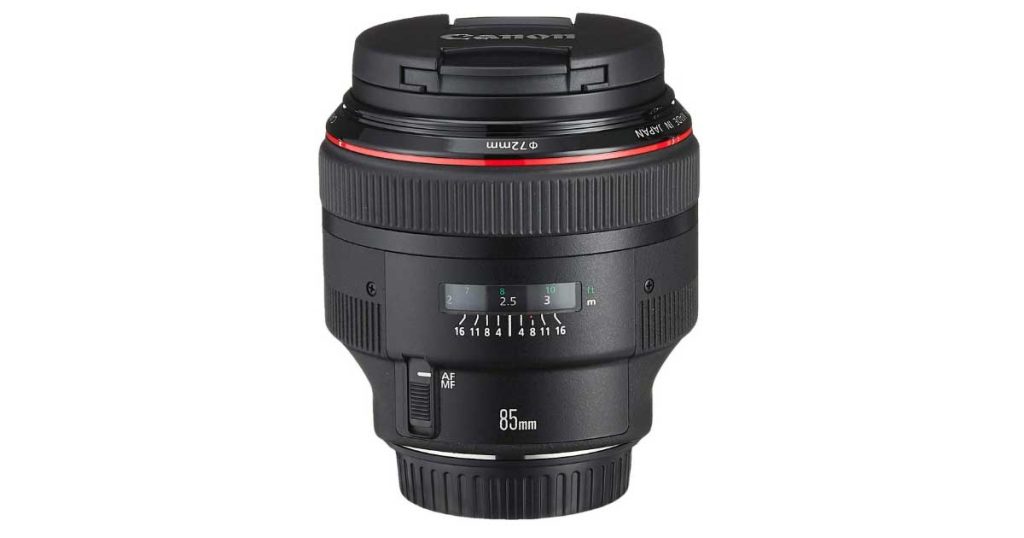
Best Canon camera lens for portraits for its versatile portrait photography contexts. Also, offers perfect bokeh that adds a beautiful touch. With optimized algorithms, you’ll explore 1.8x autofocus speed, high-speed CPU, and ring-type USM.
However, the lens comes with a nine-blade diaphragm and advanced ASC to minimize flare and ghosting. Its weather-sealed offers safe outdoor shooting and is paired with full-frame and crop-sensor cameras.
| Pros | Cons |
| Produce shallow depth of field and separate subject perfectly | Expensive |
| Silent and quieter than the f/1.4. | Heavy weight |
| Perfect for focusing in the dark. | Slow AF |
| Sharper and colors are saturated. | |
| Offer high contrast. | |
| Comes with a hood. | |
| Minimum focus distance (0.95m). | |
| Offers a 72mm filter size. | |
| Great image stabilization. | |
| Good choice for hybrid shooters. |
Canon EF 50mm f/1.2L Lens – Best for All Types of Photography

The Canon EF 50mm is a pro-grade lens that suits all types of photography. Super Spectra coating is responsible for suppressing flare and ghosting. Also, you can experience both full-frame and crop-frame sensor cameras. The lens offers natural and quality images.
However, using this lens, you can get solid knowledge about composition and different portrait styles. Street and portrait photographers use this lens the most.
| Pros | Cons |
| Faster autofocus compared to 35mm f/1.2L II. | Costly. |
| High-end and sharp image quality. | Has no zoom features. |
| Offers flexible shooting for all types of photography. | |
| Weather-resistant standard lens. | |
| Offers beautiful and creative bokeh. |
Canon EF 35mm f/2 IS USM- Best Wedding & Street Photography
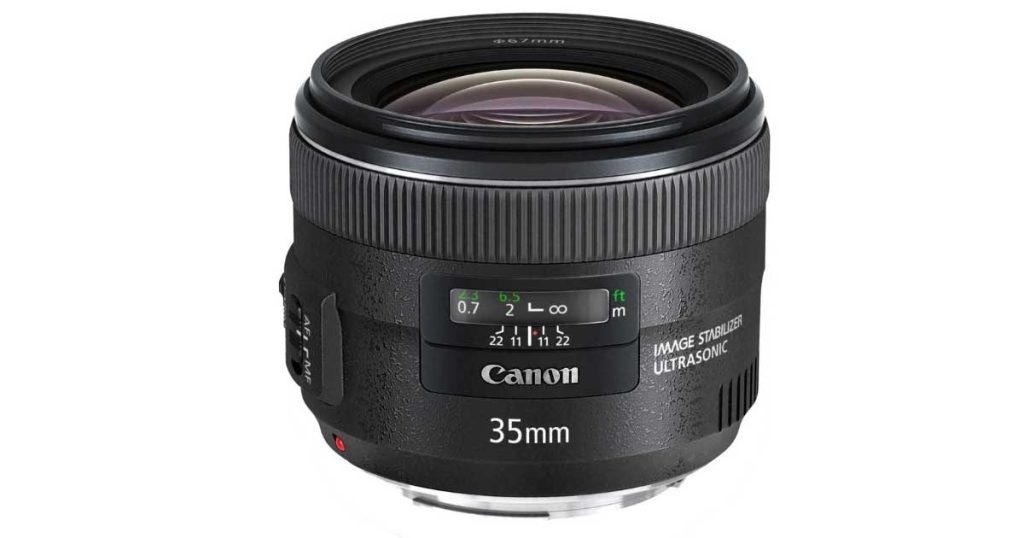
The Canon EF 35mm f/2 IS USM is the best Canon lens for portraits on a budget and offers a moderate wide-angle lens for full-frame DSLRs. The camera is ideal for travel, reportage, and other photography for its full-time manual focusing, silent AF, circular aperture, and ultrasonic focus moto.
However, the Canon EF 50mm lens offers high-quality photos. And best fit for dull lighting shoots. The ring-type ultrasonic autofocus system is relatively quiet and quick compared to f/1.2L.
| Pros | Cons |
| Able to capture crisp images. | Hood is not included. |
| High-speed autofocus. | No weather sealing. |
| Very little distortion. | Too noisy (for some events) |
| Offer a 67mm filter size. | Poor focus in low light |
| Lightweight. | |
| Effective stabilizer. | |
| The closet focusing distance is 0.24m. |
Nikon 35mm f/1.4G – Best for Street Photographers
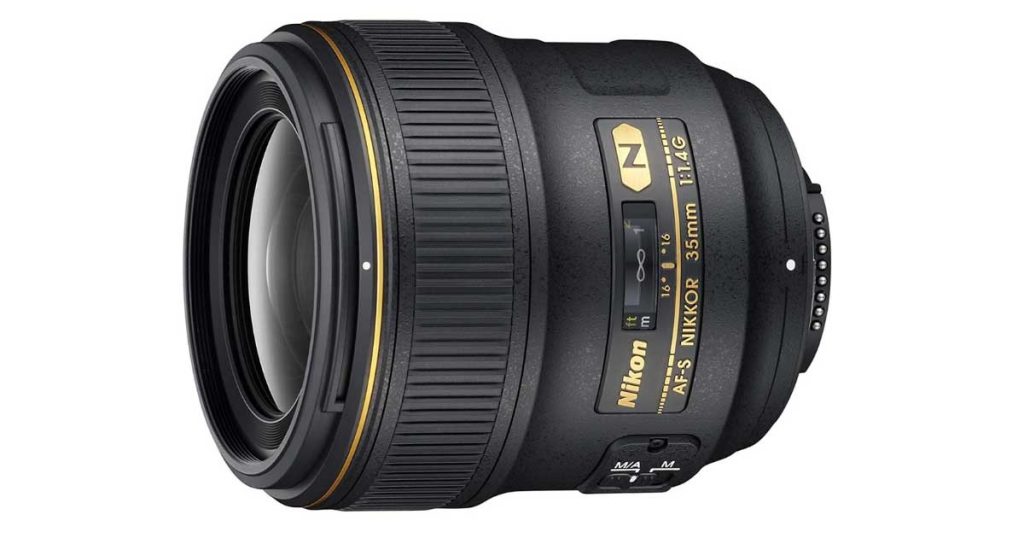
Best Nikon lens for portraits because of its naturally wide aperture that suits any situation. This fast lens can capture your picture with a beautiful and creative bokeh. A classic semi-wide angle makes this lens more attractive.
The lens is the best fit for capturing everything from landscapes and street photography. With its full-frame body, you can be able to get creative and holistic portraits.
| Pros | Cons |
| A fixed-length and versatile lens. | Sharpness to the edges has issues |
| Produce pleasing portraits with low distortion. | Expensive |
| Support fast and low-light shooting. | |
| Weather sealed. | |
| Flare resistance. | |
| Quiet and sharp in the center. | |
| Minimum focusing distance 1.0ft. |
Sony FE 85mm f/1.4 – Best Lens for Fashion Photography
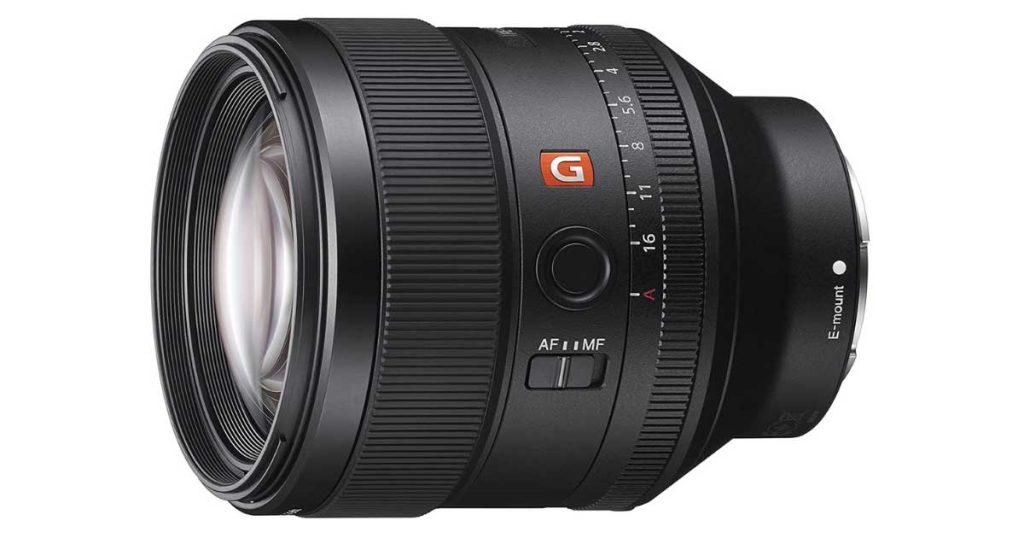
The Sony FE 85mm F1.4 GM is the perfect short telephoto lens that is ideal for portrait photography. You can take stunning photos in low-light situations. The Super Sonic Wave motor helps to focus accurately.
However, the lens is great for its soft out-of-focus effects with a wide aperture.
| Pros | Cons |
| Perfect for shallow DOF. | Expensive. |
| Weather sealed | Larger and heavier. |
| Offer impressively sharp and quality images | Lack of zoom versatility |
| Distortion-free. | |
| Reduces flare and chromatic aberration. | |
| Bright design. | |
| Fast AF. | |
| Offer beautiful and creamy bokeh. |
Sigma 85mm f/1.4 – Best Lens for Glamor Photography

The fastest 85mm lens on the market. The aim of this lens is to offer high-quality performance with a quiet and quick ring-type autofocus system. However, you can explore a reversible lens hood with a protective carrying case. Sometimes high resolution may cause motion blur.
| Pros | Cons |
| Extremely sharp. | Big and heavy. |
| Bright aperture | Adjustments require for focusing |
| Distortion-free. | Lack of image stabilization. |
| Available for multiple systems. | |
| Available for multiple systems. | |
| Outstanding image quality. |
FAQs
What makes a lens good for portraits?
For portrait photography, a good lens is a mix of several factors such as
- Long focal length
- Fast maximum aperture
- Great bokeh (if needed)
What is the advantage of larger lenses?
The advantages of larger lenses are mentioned below:
- Highlight patterns with interesting details.
- Allow more light to enter the sensor.
- Amazing light-collecting power.
- Help to capture brighter and higher resolution images.
- Good for low light situations like night photography or indoors.
- Allow faster shutter speeds with lower ISOs (depends on your photography needs).
Does the size of the lens matter affect picture quality?
Yes, the size of a lens affects picture quality because it greatly impacts the background blur, sharpness, level of details, DOF, more light, and many more important parameters.
How do I choose a portrait lens?
Choosing a portrait lens depends on some factors like
- photography style
- budget
- camera system (sensor size & focal length)
Also, it’s wise to check reviews to narrow down which lens will be best for you.
What is the best aperture for portraits?
Lower f-stops allow more light into the lens and blur the background, which helps to give a professional look to the subject. Between f/1.8 and f/2.8 is the preferable aperture for portraits. But the range also depends on the number of people or groups like
- Solo portraits: f/2 – f/2.8
- Couples portraits: f/2 – f/3.2
- Small-Group portraits: f/4
- Large group portraits: f/8+
Final Verdict
Do you want to start your career as a portrait photographer? But confused in figuring out what lens is best for portraits – 35mm, 50mm, or 85mm. We have already mentioned the differences between these three prime lenses and portrait photography types.
Without the proper guidelines, it can be daunting and impossible to take a perfect portrait photo. Go through this article carefully and decide which camera lens is best for portrait photography that suits your style.
